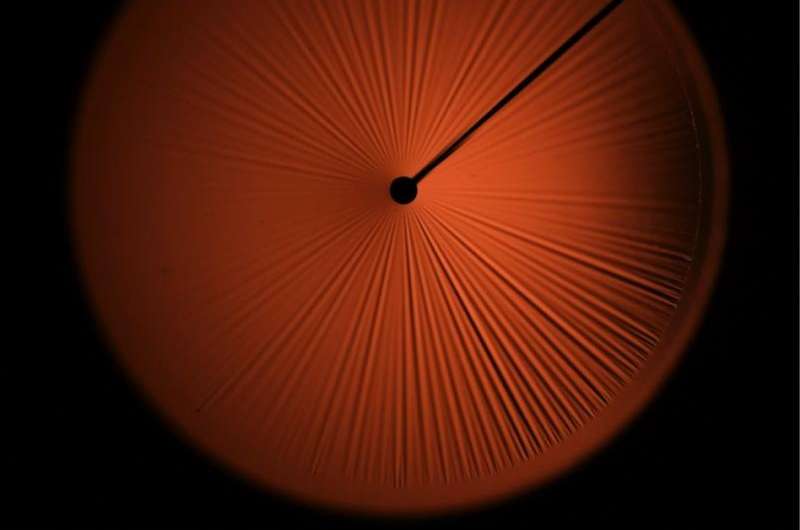Team offers new, simpler law of complex wrinkle patterns

In a new paper, researchers at the University of Massachusetts Amherst and Oxford University describe a new, more general law for predicting the wavelength of complex wrinkle patterns, including those found on curved surfaces, plus experimental results to support it.
The work is expected to help materials scientists to use wrinkles to sculpt surface topography, or to use the wrinkles on surfaces to infer the properties of the underlying materials such as textiles and biological tissues.
Physicist Narayanan Menon points out that the work is crucial for understanding how wrinkle wavelength depends on properties of the sheet and the underlying liquid or solid. Findings appear this month in an early online issue of Proceedings of the National Academy of Sciences.
As he explains, "Wrinkles sometimes appear in nature in the form of regular, parallel corrugations such as the furrows on your forehead or the ripples formed when you blow on a cup of hot chocolate. Physicists understand the characteristic spacing between these wrinkles, known as the wrinkle wavelength, as a compromise between the thin skin, which resists being bent into a very fine pattern, and the underlying material, which resists bulging into a coarser pattern. But our understanding is limited to cases where the wrinkles are uniform, and laid out in parallel lines on a flat surface."
He adds that, of course, most naturally occurring wrinkles do not satisfy these ideal situations. Most wrinkles in nature are more complicated; they often bend and splay, or are carried on a curved surface such as the outside of a cell, on a lens, an elbow or the bark of a tree.
The new law developed by a team including physicists Menon and Benny Davidovitch, with polymer scientist Thomas Russell at UMass Amherst and mathematician Dominic Vella of Oxford University, offers a scheme to quantitatively explain the wrinkle wavelength in more realistic situations.
The authors explain, "We propose a local law that incorporates both mechanical and geometrical effects on the spatial variation of wrinkle wavelength. Our experiments on thin polymer films provide strong evidence for its validity." Menon adds, "A 'local' law explains the appearance of the wrinkles at a given location by the underlying properties of the materials at that location, without having to consider how these properties vary from place to place."
More information: Joseph D. Paulsen et al. Curvature-induced stiffness and the spatial variation of wavelength in wrinkled sheets, Proceedings of the National Academy of Sciences (2016). DOI: 10.1073/pnas.1521520113
Journal information: Proceedings of the National Academy of Sciences
Provided by University of Massachusetts Amherst





















